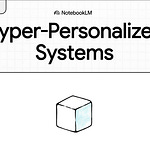If you’ve been in business for a while, you’ve likely learned the value of momentum. You’re scaling, automating, and modernizing—and technology plays a big role in that. But if you’ve also noticed your team struggling to keep up or your customers not using the latest “game-changing” features… you’re not imagining it.
You may be moving faster than your people can absorb.
This chapter is about a critical shift mid-market businesses must make: from innovation speed to adoption readiness. In the AI era, building faster is no longer your biggest advantage. Instead, your edge lies in reducing the friction that slows down your customers and your employees.
When you roll out too much, too quickly, you risk two things:
Customers ignore or abandon what they don’t understand.
Employees revert to old habits, workarounds, or worse—resent the tools you’ve invested in.
The result? Wasted spend. Slower growth. And a widening gap between your vision and your actual outcomes.
Innovation Isn’t the Problem—Absorption Is
Let’s be clear: innovation is essential. But in today’s environment, humans are the bottleneck—not the tech.
Your systems may be cloud-native. Your software may be AI-enhanced. But your team and your customers still operate on attention, habits, and trust. These don’t scale on demand.
We’ve reached the ceiling of how fast people can change behaviors, at least for now.
For customers, that means sticking with what’s familiar—even if better options exist.
For employees, that means rejecting tools that feel confusing or misaligned with how they actually work.
This is the Adoption Gap—the space between what’s technologically possible and what’s practically usable. And closing it is your next growth unlock.
The Real Cost of Moving Too Fast
You might think: “Isn’t faster always better?”
Not when it comes to change. Here’s what over-innovation often looks like on the ground:
For Customers:
They’re unaware of key features that could solve their pain points.
They feel overwhelmed by constant updates or interface changes.
They disengage from tools or services they no longer understand.
For Employees:
They abandon new systems in favor of manual workarounds.
They lose confidence and become dependent on tech support.
They see change as a threat, not an opportunity.
Overwhelmed people don’t adopt. They resist.
And that resistance shows up in your bottom line—through slower onboarding, higher churn, lower productivity, and under-utilized technology investments.
We have seen this pattern of behavior with multiple mid-market clients where the board and the leadership are fully bought-in, but there is a silent resistance from the next level of leaders. Change management becomes a “train and expect compliance” mechanism which is a hope and pray strategy.
Instead of explaining away the ‘why we are doing this’ question, asking your team where they need help is a much better starting point. Following market trends and the sales pitch of some of the best sales people around is detrimental for your business. Your business has succeeded so far because your people did boring things well. Not everyone wants cutting edge, especially your team.
The Hidden Bottleneck: Cognitive Load
Every change—no matter how valuable—creates cognitive load. That’s the mental effort it takes to learn, unlearn, or adapt to something new.
We design systems for performance. But users—both customers and employees—experience them through mental bandwidth. And that bandwidth is limited.
Cognitive load is the new bottleneck. And if you don’t account for it, your well intentioned efforts will go to waste or end up with unwanted consequences.
Progressive Disclosure: Introducing Change Without Overwhelm
One of the most powerful strategies to combat innovation overload is called progressive disclosure.
It’s simple: instead of showing everything at once, you reveal features and functionality gradually, based on what the user is doing and what they’re ready for. Help your team catch up to you.
Train in phases, not marathons.
Align rollouts with workflow habits and business cycles.
Create visible wins early to build confidence.
Progressive innovation respects the user’s journey. It paces technology with human behavior.
Feature Curation Beats Feature Creep
Here’s the truth: your customers and employees don’t need more features. They need fewer, better ones that clearly improve their work or outcomes.
Curation means choosing what not to implement—or when not to implement it.
When you prioritize simplicity over comprehensiveness, you create space for adoption, mastery, and trust.
Ask yourself:
Are we building for our users, or for internal excitement?
Are our tools easier to use over time—or more complex?
What are we asking people to unlearn to use this properly?
Technology Must Match Trust
Technology doesn’t create value. Adoption does.
And adoption doesn’t come from speed. It comes from earned trust—through clarity, stability, and meaningful outcomes.
The businesses that scale effectively don’t just “ship faster.” They:
Simplify workflows.
Sequence innovation.
Communicate why changes matter—not just what they are.
This applies across the board—from how you roll out a new customer portal to how you train your internal team on a new CRM.
The idea that people change slowly and need cues and small wins to adopt new behavior aligns with the pyramid structure you’re using
Apply the Mindset: Business Owner’s Playbook
Audit adoption, not just usage.
Are features being used the right way? Or are people finding workarounds?
Map both the customer and employee journeys.
Where do they hit friction?
What’s their current trust level with your tech?
Design onboarding like storytelling.
Start with clarity. Reveal complexity later—only when it adds value.
Prioritize enablement, not just launch.
Plan for training, reinforcement, and feedback loops—not just go-live dates.
Eliminate before adding.
If a new feature doesn’t simplify or enhance outcomes, cut it or delay it.
Final Thought: Innovate at the Speed of People
In a world where technology evolves faster than human behavior, your job is not just to lead innovation—it’s to pace it.
The most successful companies will be the ones that master the human side of change:
They reduce cognitive load.
They build trust progressively.
They measure value not in velocity, but in clarity, adoption, and outcomes.
Move fast—but only as fast as your people can follow.
That’s how you close the real gap—and build a tech-forward business that scales with confidence.
References
Norman, Don. The Design of Everyday Things: Revised and Expanded Edition. Basic Books, 2013.
Sweller, John. “Cognitive Load During Problem Solving: Effects on Learning.” Cognitive Science, vol. 12, no. 2, 1988, pp. 257–285.
Kahneman, Daniel. Thinking, Fast and Slow. Farrar, Straus and Giroux, 2011.
Nielsen, Jakob. “Progressive Disclosure.” Nielsen Norman Group, 2006, www.nngroup.com/articles/progressive-disclosure/.
Norman, Don A., and Jakob Nielsen. “Gestural Interfaces: A Step Backward in Usability.” Interactions, vol. 17, no. 5, 2010, pp. 46–49.











